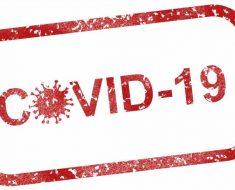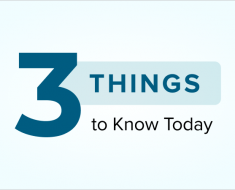LAS VEGAS – Even if you don't think blockchain is overhyped (and many people do), you may still be convinced that whatever real-world promise it holds for healthcare is either too far in the theoretical future to think much about, or it's not yet worth the effort to implement.
"It sometimes seems like challenges of implementing blockchain outweigh the benefits and ROI," said Maria Palombini, director of communities and initiatives development for emerging technology at the IEEE Standards Association, Wednesday at HIMSS18.
But in the session, "Blockchain 4 Healthcare: Fit for Purpose?" experts showcased an array of use cases that suggest the promise of distributed ledger technology is closer, more achievable and potentially transformative that you might think.
Whether it's AI and machine learning, clinical trial recruitment, empowering patients to manage their own health records, IoT and assorted other clinical applications, IEEE is already deeply entrenched in advancing a wide array of uses for blockchain, said Palombini.
"Some of the core principles of blockchain apply to healthcare," added Tim Mackey, director of the Global Health Policy Institute at UC San Diego. "This immutable distributed ledger can better ensure the resilience and provenance, traceability and management of healthcare data."
Robert Barkovich, CEO of Health Linkages, explained it this way: "Blockchain lets us agree on history, even if we don't all agree or trust each other. There's no need for a trusted third party – it's all there in the chain."
That built-in assurance and verifiability are well-suited to help address some of this industry's most vexing challenges. "By its very nature, blockchain is well positioned to be part of a solution to many problems in healthcare," he said.
Consider a fundamental issue such as data provenance.
"How do you actually guarantee that you know where the data has been throughout its lifetime, and who has touched it?" said Barkovich. In a blockchain-based system, manipulation or falsification of data "will not be possible because the hashes will not match – you mathematically prove the integrity of the data."
Similarly, blockchain is already showing big potential for helping health systems manage pharma and medical device supply chain, patient recruitment for clinical trials, security and interoperability of IoT and medical device data and privacy protections for precision medicine, he said.
And it's not just theoretical. Real advances are happening every day in a variety of different settings, each with unique considerations for different use cases. Mackey showed how blockchain is already proving its worth for patient safety, pharmacovigilance, precision medicine and more:
The drug supply chain can be "compromised by infiltration of fake, falsified and substandard medicines," for instance. But blockchain "enables provenance of supply chain data across multiple partners and better ensures integrity."
Clinical trial recruitment can be costly and time-consuming. But blockchain can more easily enable patient matching and monitoring (by matching with EHRs) and can validate data, incentivize participation and allow for e-consent.
Medical device IoT security are critical concerns, but blockchain can help by allowing "smart contracts" for maintenance and ensuring tamper-proof device logs.
Blockchain comes in all flavors: centralized, decentralized and distributed; public, private, hybrid, permissioned. And it's critical for healthcare organizations looking to leverage the technology to do their homework in investigating the various frameworks.
"There's lots of them out there," said Barkovich. There's Bitcoin blockchain, the original and probably best-known. There's Ethereum ("if bitcoin was developed for cryptocurrency, Ethereum was really developed for smart contracts, which allow people to mathematically prove when something happens with a contract").
There are also various Hyperledger projects, "which are all open source and run by the Linux foundation," he explained. "They have five current projects, but several others on the back burner. The biggest ones are Fabric, which is championed by IBM, and Sawtooth Lake, which is championed by Intel. And there are many, many more out there. You just have to choose the right one for your use case."
How do you know which one that is? Trial and error can be valuable when developing and exploring new projects. "My advice would be to figure out what your problem is, figure out what you want to solve," said Barkovich. "What blockchains are available to you? Know the strengths and limitations of these frameworks. If something doesn't doesn't work well or doesn't fit, it's best to find something that does fit rather than trying to fit a square peg in a round hole."
Full HIMSS18 Coverage
An inside look at the innovation, education, technology, networking and key events at the HIMSS18 global conference in Las Vegas.
Twitter: @MikeMiliardHITN
Email the writer: [email protected]
Source: Read Full Article





